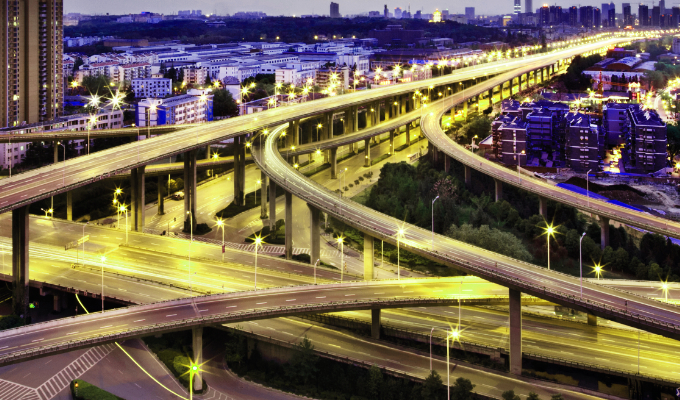Alert readers will have picked up on the fact that China today celebrates her 70th birthday. Authorities up and down the land, in every field of public service, have been clambering over each other to be seen to be doing their bit for the motherland. Among the more quirky which attracted the attention of The Nanjinger, lamposts.
On the afternoon of 11 September, at a Nanjing Government press conference entitled, “Innovation for Development, Struggle for a New Era”, the Nanjing Urban Management Bureau took us on a delightful look back at the 70-year history of urban street lighting in Nanjing.
Today, there are 320,000 street lamps in Nanjing, a far cry from that little starlight through a window by way of compliment to the amber glow cast by the past’s kerosene lamps.
During the press conference, Jin Nan, Deputy Director of the Bureau, explained that after the founding of the People’s Republic of China, the main roads in Nanjing were equipped with basic street lighting; the source thereof being incandescent lamps. In the 1960s, these were gradually replaced with high-pressure mercury vapour lamps, which again stood down to make way for high-pressure sodium lamps in the 1970s on major trunk roads.
By the time the 1980s and 1990s came around, the laying of separate power lines and pole lighting had been popularised, leading to functional lighting standards being established and and a coverage in urban areas that has remained above 97 percent ever since.
The concept of landscape lighting did not appear in Nanjing until 1989, when the Nanjing Yangtze River Bridge and Confucius Temple became the earliest and most Nanjing-style night scenes in the city. In 1991, the Hunan Lu Light Night Market opened. 4 years later, Xinjiekou, Gulou, Hunan Lu were among those to introduce illuminated outdoor advertising.
With the following improvement in living standards and an increasingly rich nightlife, outdoor lighting needed to become more multi-functional. In 2000, the then-modern landscape lighting appeared on the Zhongyang Men Overpass, which soon became a kind of visual business card for the city. At the same time, Nanjing’s main urban area began to extensively lay cables and install street lights, which not only increased the number of lights on primary and secondary roads, but also brought illumination to sub districts and more remote communities. Residents thereof were finally able to go home without the need for flashlights.
In this decade, functional lighting has realised energy conservation, while LED lighting has also emerged. Its luminous efficiency is higher and light distribution more even, while the quality of lamps is developing rapidly, especially with the diversity, multi-colour and controllability of lamps that make Nanjing’s landscape lighting more beautiful than ever.
In 2013, with the coming of the Asian Youth Games and the Youth Olympic Games the following year, a series of landscape lighting projects with Nanjing characteristics was undertaken, such as the Nanjing City Wall, the Imperial Examination Hall and the Youth Olympic Park.
It’s not all fancy modern technology, however, as Nanjing has also been respectful of history. At the end of 2018, with renovation of the Nanjing Yangtze River Bridge complete, the full length of the bridge was lit for the first time, using the same vintage magnolia lamps that were originally, and sporadically, installed.
Bringing the city’s street lighting well into the 21st century are the 25,000 street lamps in Nanjing with single-lamp control capabilities. Each lamp can be individually controlled; brightness, color, etc., making possible dynamic patterns of light.
Such lighting facilities also double up in their functionality; some offer video surveillance possibilities, others can be 4G/5G base stations, smart manhole covers and water level detectors, while there are even also smart illuminating rubbish bins.
All these different kinds of lighting systems must take quite some looking after. According to Liu Jianxiang, Director for North City Maintenance of the Street Light Management Office, the service life of Nanjing’s street lights has been extended from 100 days to 10 years. Just as well, given that the future plan is to make Nanjing’s night more and more dazzling. Even today, then are more than 800,000 landscape lights in operation, meaning that there are a total of more than 1.1 million lights to be looked after. In the past, this was done with push bikes and ladders; today’s maintenance teams have the assistance of electric bikes, engineering vehicles and inspection cranes.
As the great Chinese nation ticks off her seventh decade, the Nanjing Urban Management Bureau wants us to know that more landscape lighting will be coming next to Gulou, Xinjiekou and Binjiang. If they keep going at this rate, future Nanjing by night, as the songs goes, will be so bright we’ll have to wear shades.









